Fewer Babies Pose Difficult Challenges for Europe
Fewer Babies Pose Difficult Challenges for Europe
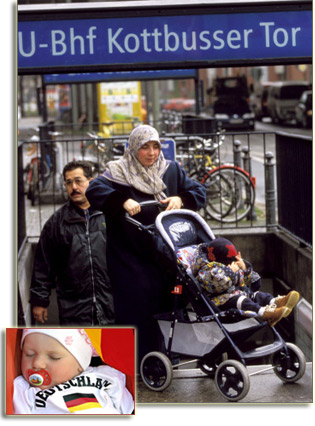
NEW YORK: The fall of the Berlin Wall, the collapse of the Soviet Union and expansion of the European Union are well-known historic events at the close of the 20th century. Another event, at least as significant, has largely gone unnoticed: After centuries of growth, Europe’s population is now on the decline, and the impact of this trend will be felt not only by European society and its economy, but also globally. In particular, the need to replenish the dwindling workforce will have long-term consequences on Europe’s relations with its Middle Eastern and North African neighbors.
The population of Europe has reached a peak of about 731 million people and now heads for decline. Over the coming decades, the pace of decline is expected to quicken to around 2 million fewer persons per year. Consequently, the population of Europe by mid-century is likely to be around 664 million, nearly 10 percent smaller than its current size (Table 1). With this decline and continuing population growth in other regions, notably Africa and Asia, Europe’s share of world population is expected to decline from 11 percent today to 7 percent by 2050.
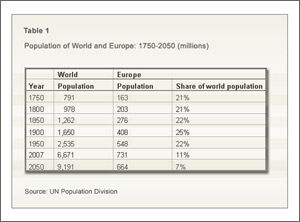
Notably, this mid-century figure of 664 million assumes an average net annual inflow of 800,000 immigrants as well as some increases in fertility rates over the coming decades. If immigration to Europe stopped altogether, its population in 2050 would be some 50 million less than projected. Moreover, if immigration ceased and current fertility levels remain unchanged, then the population of Europe would fall well below 600 million by mid-century.
Although the population of Europe as a whole is declining, considerable variation exists across the continent. Some countries, such as the Russian Federation, Ukraine, Italy, Poland, Romania, Germany, Belarus and Bulgaria, face substantial projected declines. Others, such as the UK, France, Ireland, Sweden, Norway, the Netherlands, Albania and Iceland, are expected to experience gains. In most cases, the projected population gains are the result of immigration.
Europe’s future demographic decline is not due to plague, starvation, warfare, climate change or some other calamity. It’s the result of women and men choosing to have fewer children than needed to ensure population replacement. With the exception of Albania, all nations of Europe are experiencing low fertility. In many countries, such as Czech Republic, Germany, Greece, Italy, Poland, the Russian Federation, Spain and Ukraine, fertility levels are now closer to one child than two children per couple.
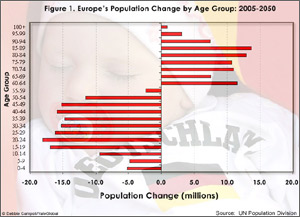
Two-thirds of the European countries view current fertility levels as too low and half of the countries have adopted policies to raise fertility, the most recent being Germany. Many European governments seek to address the underlying causes of low fertility and adopt polices to encourage couples to have more babies. Job security, maternity and paternity leave, childcare, after-school programs, cash grants and allowances, priority housing, flexible work schedules and part-time employment are incentives already adopted or seriously considered by governments.
Will government policies, programs and other pro-natalist incentives raise birth rates sufficiently to attain replacement-level fertility? European fertility levels will likely increase somewhat above the low rates of today as the lowering effect of postponing childbearing runs its course. However, most European governments probably cannot raise fertility to replacement levels in the near term.
In addition to population decline, Europe’s population continues to age, an issue of concern for most European governments. Whereas in 1950 the median age of the European population was 30 years, today it’s 40 years. Europe is the world’s oldest region, on average about 10 years older than Latin America and Asia and 20 years older than Africa. By 2050, Europe’s median age is projected to reach 47 years.
Also during the coming decades, Europe’s population age structure will undergo a dramatic transformation, with marked declines in the working ages and corresponding increases in the population 65 years or older (Figure 1). The population aged 25-49, for example, is expected to decline by approximately 75 million and those aged 65 or older to increase by nearly 70 million by mid-century. In the absence of immigration, the projected declines in the working ages are more striking, with the population aged 25-49 declining by nearly 100 million, a 20 percent decline from today’s level.
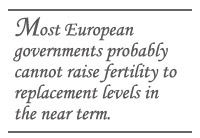
Although Europe receives many immigrants, today's numbers – an estimated net flow of some 1 million per year – are not enough to offset the demographic consequences of low birth rates. Europe would need to double its current annual level of net immigration to halt its population decline, triple the level to maintain the size of its current working-age population and quintuple the level to keep worker/elderly ratios at roughly today's levels.
Moreover, and in contrast to the past, the ethnic composition of immigrants in many instances differs markedly from the populations of the receiving countries. Immigrants in the past were largely from countries in southern Europe, including Italy, Spain and Portugal. Many of today’s immigrants to Europe come from Africa and Asia, raising concerns in host communities about cultural integrity and assimilation. While the absolute numbers of immigrants are comparatively small, concentrations have increased visibly in recent decades. Adding complications is the presence of large numbers of migrants who have entered illegally or lack documents for legal residence, many of whom are poorly educated and low skilled. These conditions contribute to greater ethnic diversity and tensions within and among countries, raising concerns about cultural integrity, national identity, integration and national security.
Do Europe’s future population decline and aging offer promise or peril? Not surprisingly, the answer to this question varies considerably. Many European governments are increasingly alarmed about the economic, social, cultural as well as geo-political consequences of shrinking and aging populations. Some countries, such as the Russian Federation which by mid-century is expected to decline by a fifth, or more than 30 million people, consider low birth rates a serious crisis, jeopardizing the basic foundations of the nation and threatening its survival.
Economic growth, defense, pensions and health care are areas of major concern. Faced with demographic decline and rapid aging, many European governments adjust their migration policies with the aim to maintain or increase the size and quality of their workforces, which in turn is expected to reduce fiscal pressures on pensions and health care.
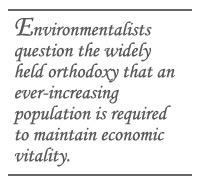
Others view Europe’s population decline as a welcome development. Much of the public already feels that the continent is overcrowded and would prefer less density and congestion as well as lower levels of immigration, especially illegal migration. In addition, many analysts see future population decline as reducing the harmful effects of modern production and consumption patterns on the environment, especially with regard to global warming. Others, such as environmentalists and those who support sustainable development and population stabilization, question the widely held orthodoxy that an ever-increasing population is required to maintain economic vitality and societal well-being.
Promise or peril, there’s little doubt that the nations of Europe – as well as Japan – sail into uncharted demographic territory. Voluntary population decline and demographic aging of this order and scale have few, if any, comparable historical parallels. Since this occurs at a time when for variety of reasons, for example, growing fear of religious extremism and threats to national security, countries are reluctant to open the immigration door, the challenge for the governments is greater. Population decline can no longer be left to economists and demographers to ponder about as it fast rises to the top of the political agenda.
Joseph Chamie is managing director of the Center for Migration Studies and editor of the International Migration Review.